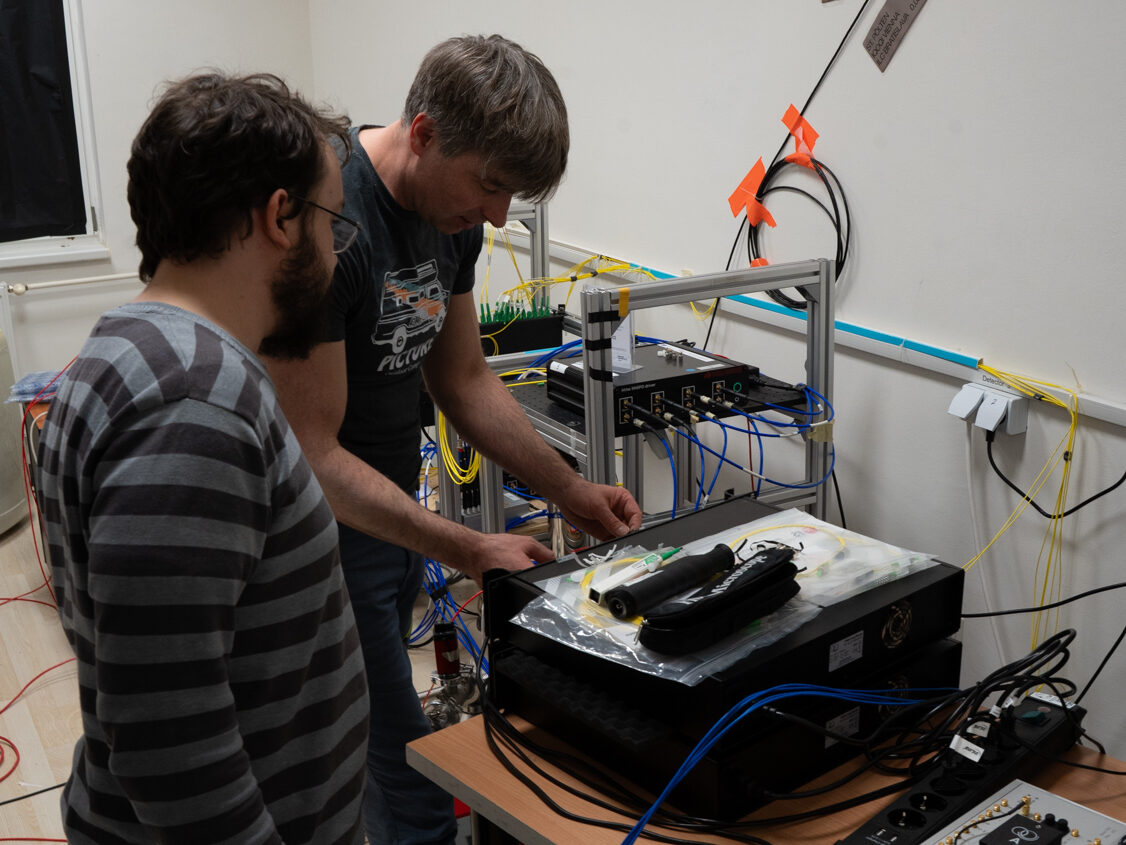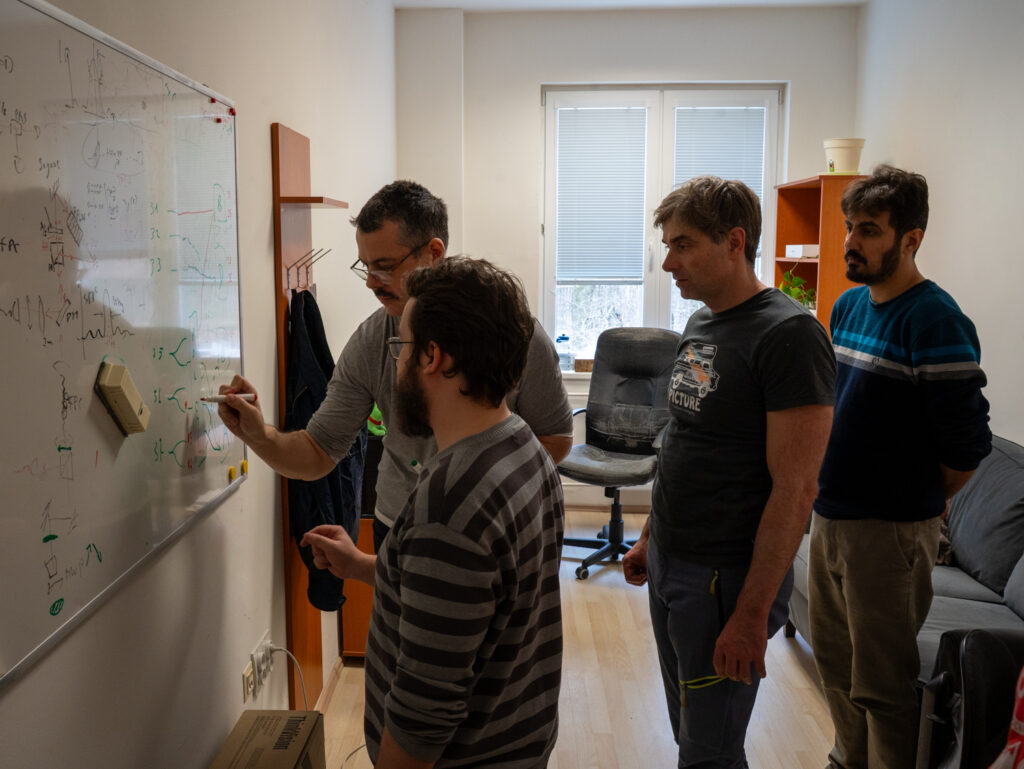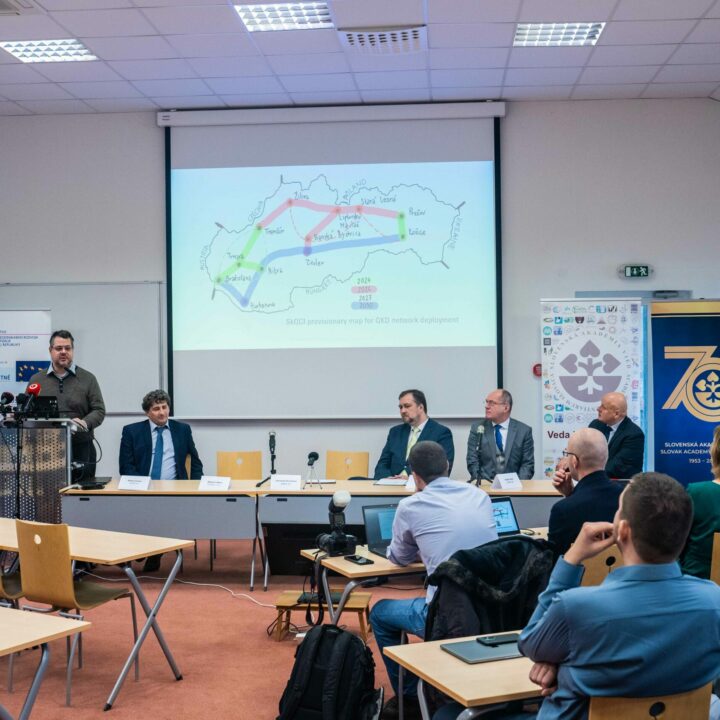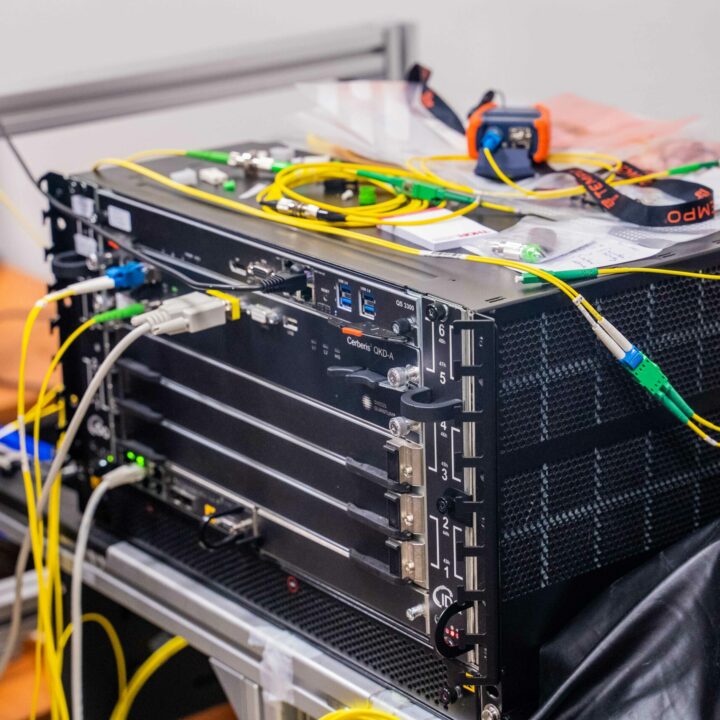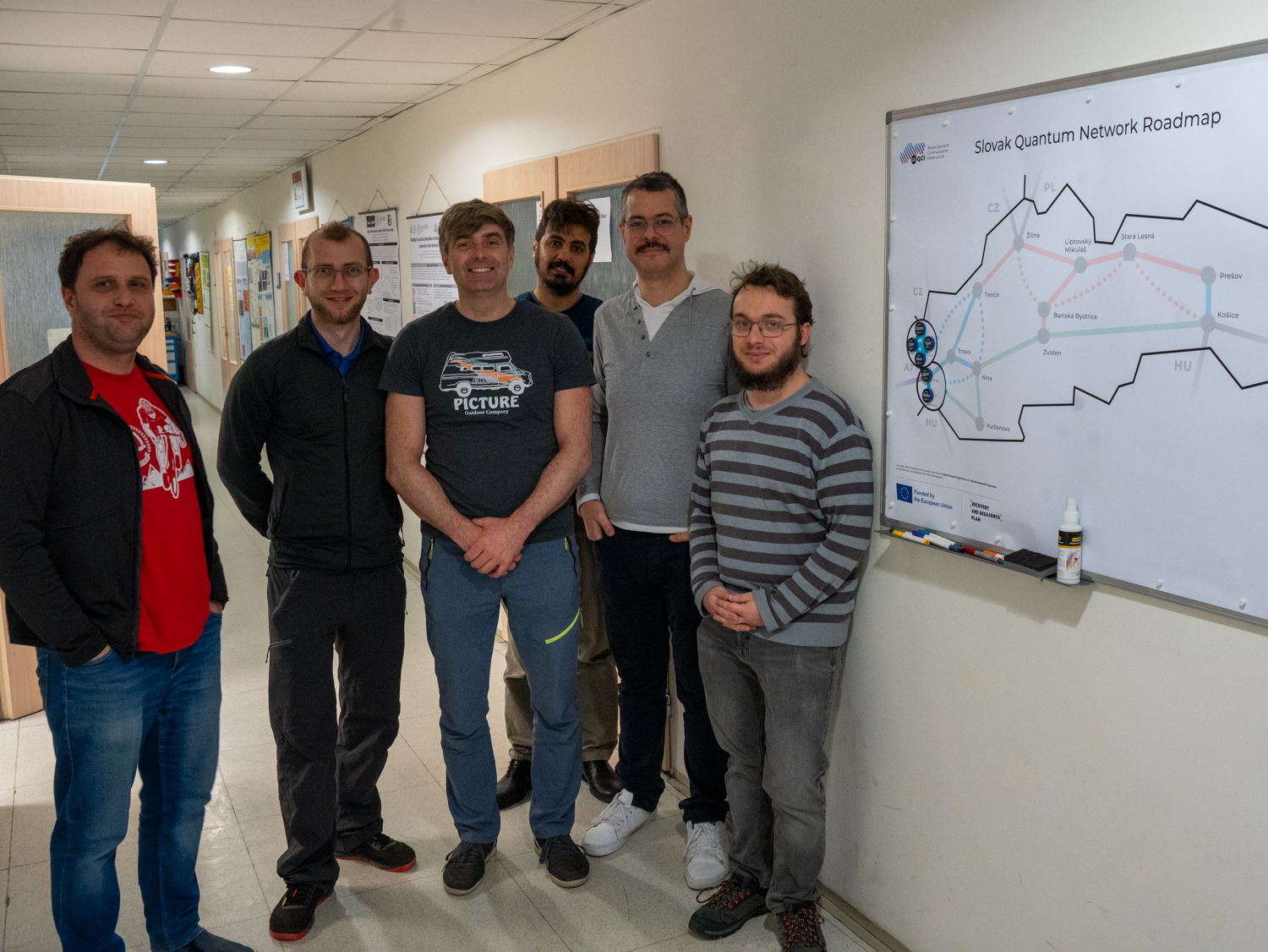First Fully Meshed QKD Prototype of skQCI Installed by RCQI and Quantum Optics Jena
A major technical milestone in the skQCI project: Researchers at the Research Center for Quantum Information (RCQI) at the Institute of Physics SAS have successfully completed the installation and testing of a fully meshed quantum key distribution (QKD) system. Developed in close collaboration with Quantum Optics Jena GmbH, the system showcases the technical maturity of entanglement-based quantum networks and brings Slovakia closer to deploying a national quantum communication infrastructure.
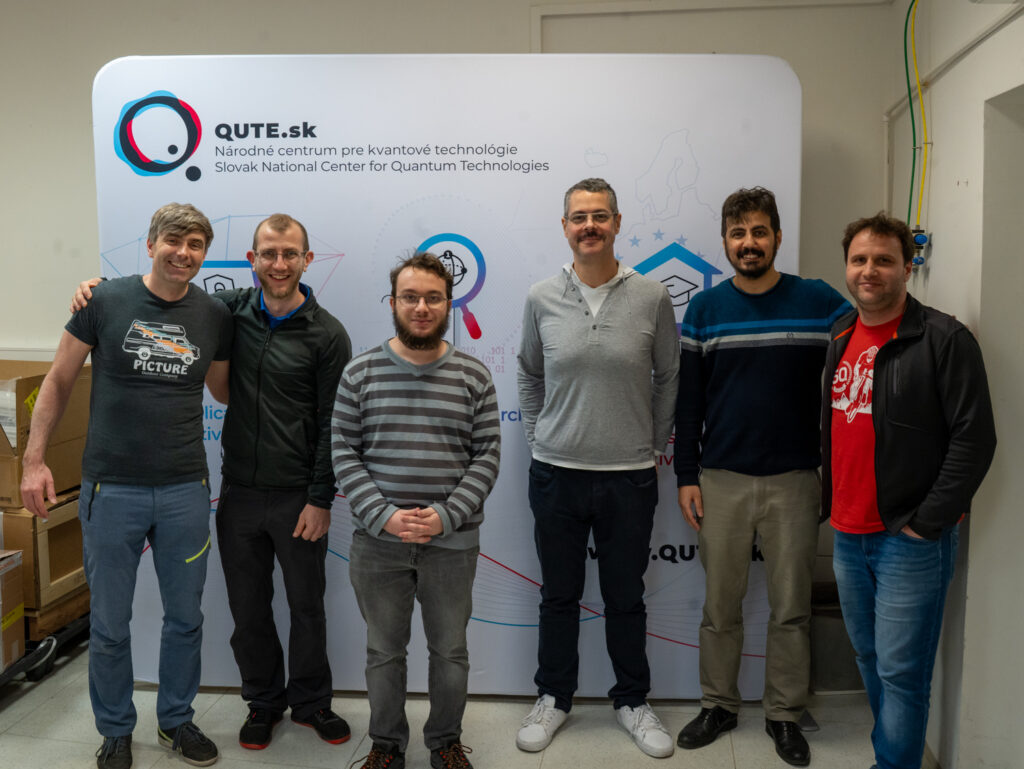
The system was installed and tested on March 10, 2025 under the leadership of Djeylan Aktas, with contributions from Saeid Salari, Younes Benamara, and Peter Rapčan, in collaboration with Oliver de Vries and Kevin Füchsel from Quantum Optics Jena. This international team worked across multiple hardware and software layers to demonstrate key capabilities for secure quantum networking.
Two Modules, One Network Vision
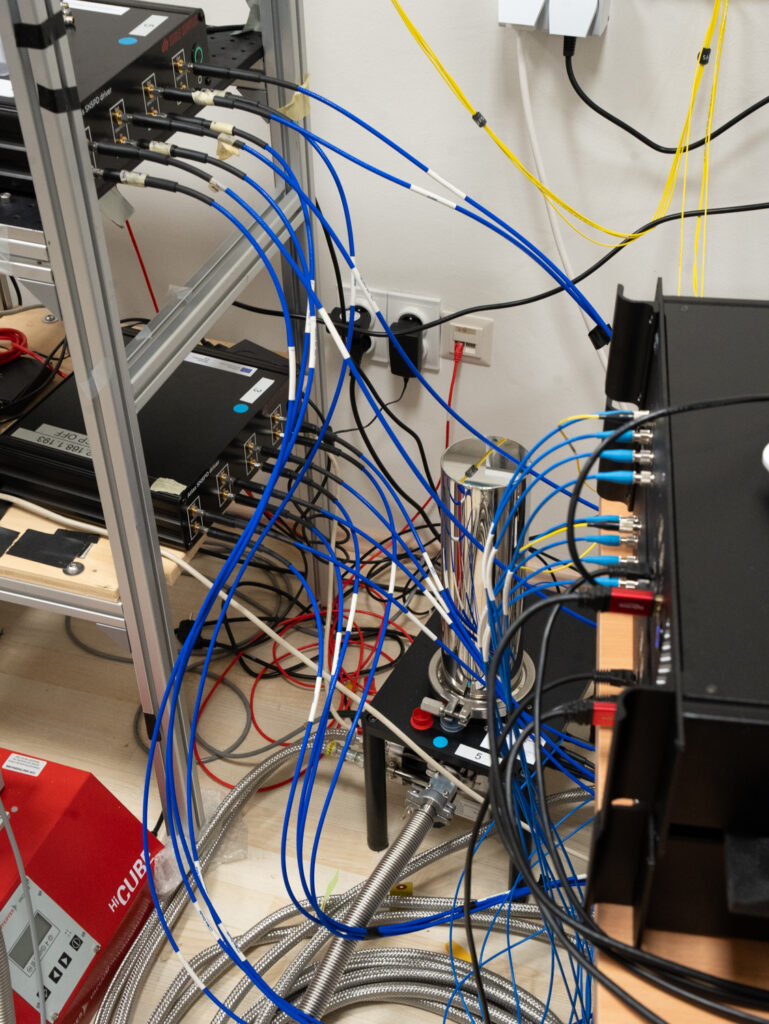
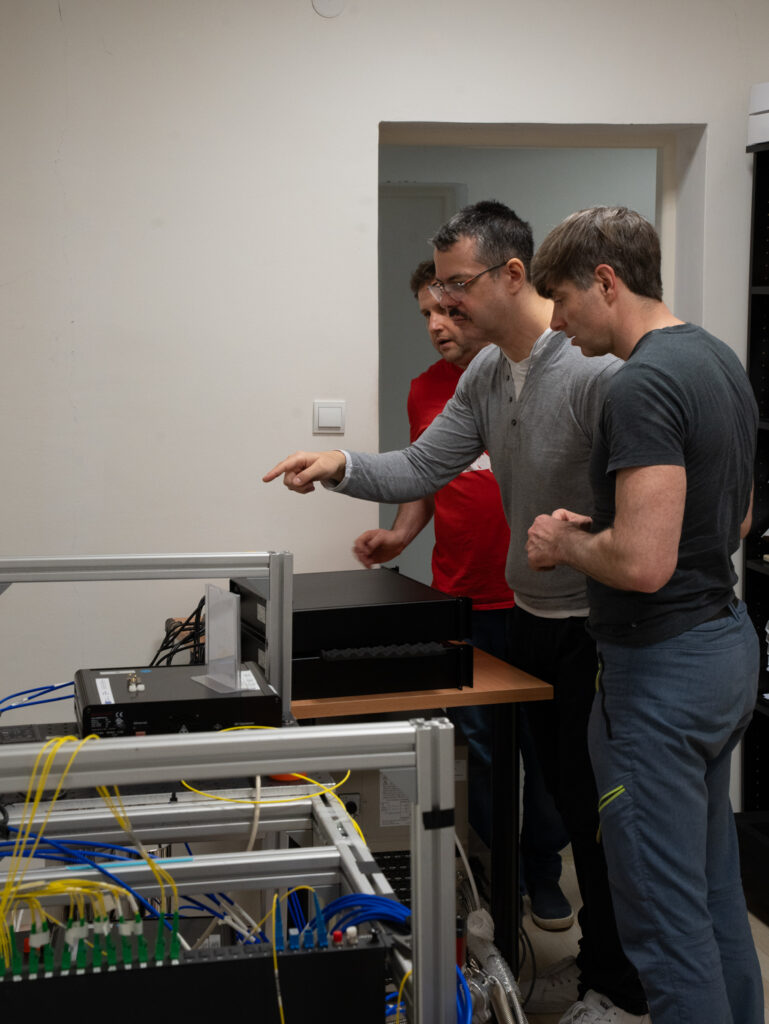
The installed system can be divided into two main modules, a POLarization COntroller module (PolCo) and a Polarization Analysis Module (PAM). The PolCo module is connected to three of the six wavelength channels allowing communication of all four users in the network. This module then rotates, in real time, the polarization states to correct the polarization drift of each wavelength due to the propagation of photons in the deployed fibers. The PAM module for each user analyses polarization states of the detected single photons and checks for the correlations that will be used as a resource to generate cryptographic keys. Both modules are integrated in a 19” rack-mountable module with a dedicated server that calculates, in real time, the security parameters, the number of single event detections, and computes the fidelity of the entangled states. The server also creates key pools for a Key Management System (KMS) interfaced through the ETSI014 standard, allowing it to produce six quantum-safe keystores between all the possible combinations of users within the network.
This setup is the first to showcase how to practically generate secure keys between four nodes with entanglement-based QKD systems, resulting in a fully-connected mesh, creating six key stores simultaneously. It also represents a practical demonstration of advanced synchronization and automated polarization compensation in demultiplexed environments for handling entanglement distribution in the context of QKD applications — a major technical hurdle in real-world QKD systems.
Built-In Defense: QKD’s Natural Eavesdropper Detection
One of the most powerful features of QKD — its ability to detect intrusion — was put to the test. During experiments, the RCQI team deliberately tampered with the optical fiber bundle, simulating an eavesdropping attempt. The system immediately responded: it detected the anomaly via a spike in the Quantum Bit Error Rate (QBER), halted key generation, and waited until the QBER returned below the secure threshold. This demonstration was a clear and compelling validation of QKD’s physical-layer security, showcasing how tampering attempts cannot go unnoticed.
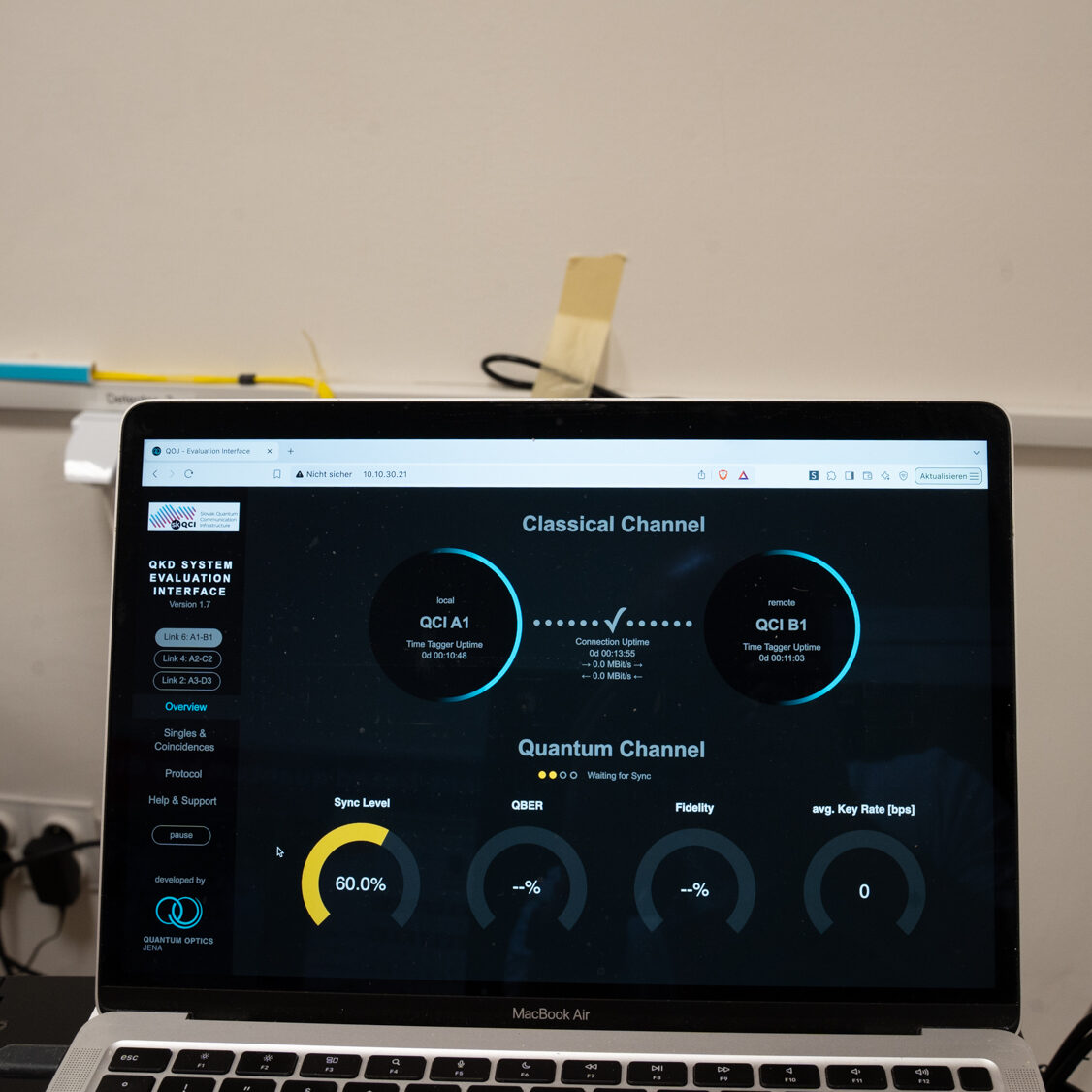
“This installation not only marks a technological milestone for the skQCI project, but also for Slovakia’s role in the European quantum landscape. The successful collaboration with our partners at Quantum Optics Jena shows what’s possible when expertise and innovation meet in the lab.”
Dr. Djeylan Aktas, project leader
The successful deployment of a fully meshed, entanglement-based QKD testbed is not just a proof of concept — it’s the first step in building a national quantum backbone that will one day connect our cities, institutions, and critical infrastructure with IT-Security.
